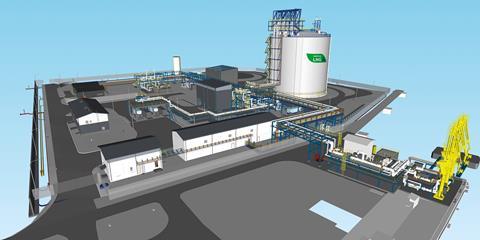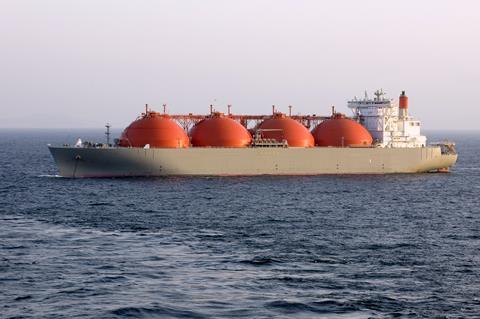

Vienna was the perfect location for the European Gas Conference, hosted by the Energy Council, which took place this week from 28th to 30th January. The city was regarded as an ideal fit as it lies close to the intersection of several major natural gas pipelines, such as the Trans Austria Gasleitung (TAG) which flows south west to Italy.
Day one of the conference focused on LNG, which is often regarded as a cross-over topic between the energy sector and the industrial gases industry. gasworld attended the conference to keep abreast of the dynamics influencing LNG supply and reflect on what the implications might be for industrial gases operators, engineering companies and equipment suppliers active in the sector.
Macro drivers of LNG growth
The forces driving LNG pricing and therefore its potential use in various applications such as fuelling ships or cars are much bigger than demand for the product its self. LNG demand is only a tiny fraction of pipeline gas demand which is mostly associated with electrical power production. The requirement for electrical power, and specifically the demand for clean power that is not produced from coal is a major contributor to the natural gas supply and demand balance.
Recent changes in European emissions legislation and CO2 trading and the introduction of the so-called UK ‘carbon tax’ have already driven the shift from coal to gas in the UK to a huge extent in the past decade. In Germany, the intent to stop burning lignite by the late 2030’s will also change the structural supply of fossil fuels in Europe. These policy shifts are the step changes at a macro level that will have an influence on LNG pricing at a micro level underneath them.
Patrick Agar, Head of Gas at Lambert Energy Advisory in London, is familiar with the interplay between the micro and macro environment for LNG and gas. He says, “Having an eye on the broader energy context that LNG sits within, alongside narrower focus on LNG market details, can help us detect shifts in that market earlier. For example, recent nuclear, coal and renewables policy changes in Europe focussed on the power sector have had major knock-on implications for natural gas and consequently LNG demand, even though that was not their explicit aim.”

Source: gasworld
On the role that industrial gases companies can play in the LNG value chain, he adds, “Any reduction in the cost of gas liquefaction to produce LNG would be welcome. When we consider the cost build-up of gas produced in the US, liquefied to LNG on the gulf coast, shipped to Europe and re-gasified and piped through the gas distribution grid, the liquefaction costs themselves can typically be between one quarter and one third of this total. Shaving a few percent off the energy costs and power requirements to operate a liquefaction facility can therefore help to control the landed cost materially. I would imagine that industrial gases engineering specialists in cryogenic processing, gas compression and expansion cycles are surely well placed to support this efficiency drive.”
Off-grid LNG applications growing fast from a small base
The overwhelming majority of LNG, more than 95% in most countries, is re-vaporised and used within the natural gas distribution grid. The amount that is used for ‘off-grid’ applications such as fuel for cars, trucks or ships is small but growing quickly. Exactly how these off-grid applications will develop remains to be seen but consensus seems to be forming that the lion’s share of the volume will be as a marine fuel.
Regulatory changes for shipping in Emissions Control Areas close to densely populated coastal regions are forcing operators to clean up their emissions by either using conventional bunker fuel with SO2 scrubbing and DeNOx SCR techniques or switching to cleaner burning fuels such as low sulphur heavy fuel oil or LNG. Some of the changes require equipment retrofits on board, some rely on the oil and gas industry to make and store different refined products.
The LNG option leans heavily towards the construction of modern ships with new gas turbine power systems. Despite the costs involved, the number of LNG powered ships under construction today is similar to the number sailing the world’s oceans already. So, within the next two or three years we should see a doubling of the number of LNG powered ships in operation.

Source: Hamina
As a regular commuter on the Baltic ferries between Estonia and Finland and the CEO of Hamina LNG OY, an LNG terminal operator in Finland, Peter van Buuren is well placed to comment on the use of LNG in marine applications. He says that “the modern LNG gas turbine ferries operating between Tallin and Helsinki that I sail on are so much quieter and smoother than the older piston engine vessels where the engine noise and vibration could be heard and felt throughout the ship. This improved passenger experience will surely make LNG a particularly attractive option to power luxury cruise liners.”
van Buuren continues, “Our Hamina LNG terminal in Finland can supply the marine sector, and other off grid applications such as industrial companies who are switching from burning heavy fuel oil to LNG as a cleaner alternative. We fill dedicated LNG road tankers or specially insulated ISO containers to transport the fuel to these inland customers where they store it as liquid until it is re- vapourised, as required according to their demand profile.”
“Barges can also transport LNG to power plants located in coastal regions. Additionally, we have the option to use rail cars for inland distribution in the future. These off-grid applications are growing well, but most of the LNG that we receive is re-vapourised and fed to the local and national gas distribution grid – this will remain the core market for our LNG for the foreseeable future.”

Source: gasworld